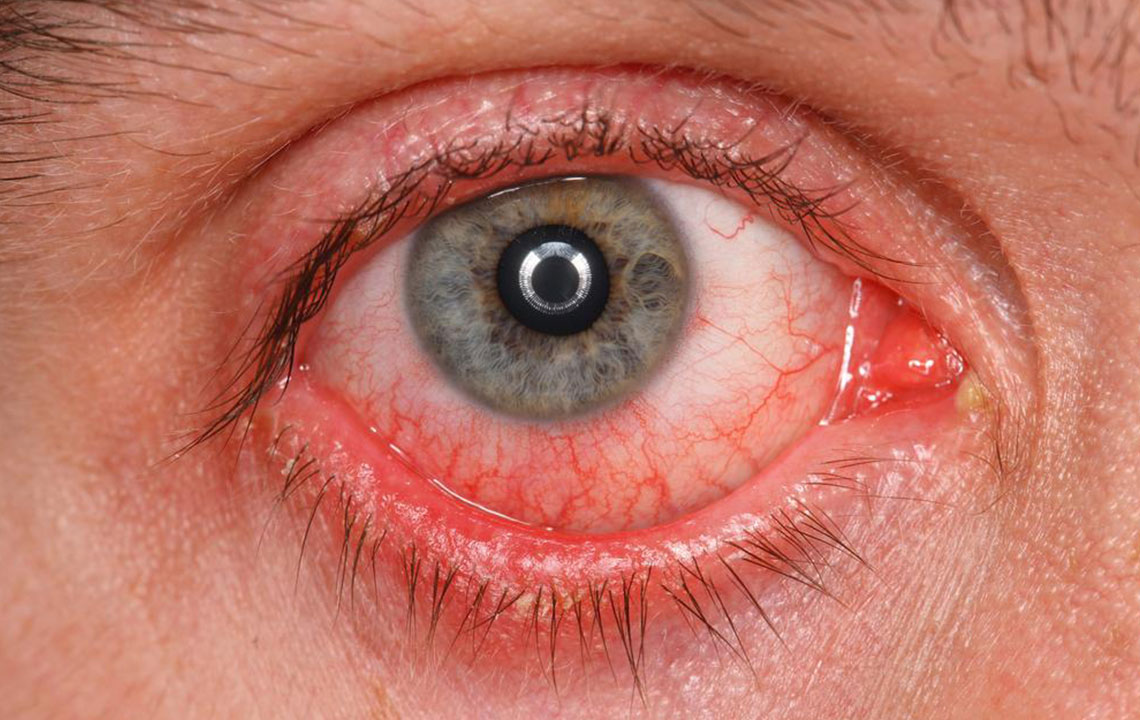A Few Common Symptoms, Causes, And Treatments of Pink Eyes

Pink eyes, also known as conjunctivitis, is caused when there is swelling and redness of the conjunctiva. The conjunctiva is the mucous membrane which surrounds the eyelid and the surface of the eye.
Causes of pink eyes
Conjunctivitis is a common eye infection. The infection normally subsides in about 7 to 10 days. To ease the discomfort, you can use eye drops for pink eyes that are available over the counter.
Pink eyes can be caused due to a bacterial or viral infection. Chemicals, smoke, and fumes can also cause conjunctivitis. Other causes include dry eyes (caused due to lack of tears because of exposure to wind/sun) and any other allergies can trigger pink eyes.
Types
Based on what causes the pink eye, the condition is classified as viral pink eye and bacterial pink eye.
Viral pink eye
A viral pink eye is caused by the adenovirus. The herpes virus can also be the reason for viral pink eye. The associated symptoms typically last for 3 to 5 days. In some cases, the infection can become chronic and last for up to 3 weeks.
The symptoms include the following:
- Excessive release of tears
- The white part of the eye becomes red
- Swollen eyelids
- Itching and burning sensation
- Clear or sticky discharge from the eyes
- Swelling and tenderness in the region near the front portion of the ears
You don’t require any medication to treat viral pink eye. It will subside on its own. Maintain proper hand hygiene, and keep a separate face towel to stop the spread of the infection. In case the infection is caused by the herpes virus (which is a rare occurrence), antiviral medicines are administered.
Bacterial pink eye
When bacteria enters either of the eye or the area around the eye, it can cause bacterial conjunctivitis. Common bacterial infections include gonorrhea, staph infection, haemophilus influenzae, and cat scratch disease. The symptoms of a bacterial pink eye include yellowish discharge from the eyes, causing the eyelashes to stick together, swelling in the upper lid, mild pain, and redness in the eye. The duration of the bacterial infection lasts for about 7 to 10 days.
With antibiotic treatment, the symptoms subside in about 2 to 3 days. Topical antibiotics in the form of eye drops for pink eye are used to treat pink eye. Most of these eye drops for pink eye are available in your local drug store. Many eye drops for pink eye are available in retail stores as well. Most of these drops give relief from the itching and pain. They offer a calming effect which reduces your urge to itch. Before using any of these, make sure that you consult a doctor first.
Treating pink eye at home
In case you’re wearing contacts, take them off and use glasses if you suffer from conjunctivitis. Warm or cold compress offers much relief. If the pink eye is due to an allergy, like exposure to chemicals or smoke, a cold compress can be used. On the other hand, if it is a viral or bacterial infection, a warm compress provides the much-needed relief.
When using compress, never use the same compress for both the eyes. There is an increased risk of infection. Use a clean and different compress each time. To clean the discharge in the eyes, use a clean tissue and wipe the eye from the inner side of the eye, moving to the outer corners. If the condition does not subside in about 3 to 5 days and if the swelling and pain increases, it is best to consult an eye doctor. An ophthalmologist can determine the underlying cause of the infection and decide on the further course of treatment.
Preventive measures
- Wash your hands clean after you touch your face/eyes and also after you’ve administered the eye drops for pink eye.
- Refrain from using eye makeup. Disinfect all your eye makeup tools. Better if you dispose the old ones and buy a new set.
- Do not share eye makeup, especially when your eyes are infected.
- Avoid wearing contact lenses during the period of infection. To prevent, contracting the infection, do not share contact lens, storage cases, and lens cleaning solution.
- Do not share your eye medicine. If more than one person in the family is suffering from pink eye, have separate eye drop containers.
- Wear protective glasses when you’re outdoors.
- Do not share face towels, pillows, and hankies. Wash and disinfect them regularly.
- In case you’re looking into the eyes of an infected person or dispensing eye drops for pink eye, wash your hands thoroughly.
Risks
Pink eye does not affect your vision. It causes irritation and discomfort. But, pink eye is contagious. It can easily spread. Hence diagnosing the condition early helps contain the spread of infection.


